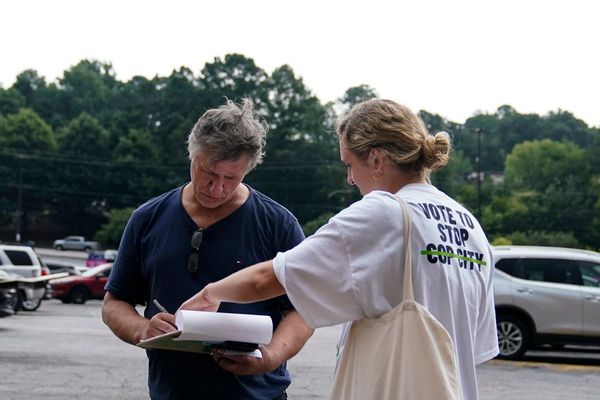
There's an opportunity to push through climate policies in the guise of inflation-busting ones, but that may not address the growing gap between our climate action and our climate targets, Marc Daalder reports
Analysis: The scrapping of the Government's "cash for clunkers" scheme frees up more than half a billion dollars for climate-friendly projects that also reduce the cost of living.
The vehicle scrappage policy was funded out of the Climate Emergency Response Fund (CERF) at Budget 2022, to the tune of $568 million. While Prime Minister Chris Hipkins dodged questions about whether the cash would still go to climate policies, his Transport Minister Michael Wood and Climate Change Minister James Shaw (also the Greens co-leader) were both emphatic that it had to.
READ MORE: * Government to keep petrol cheap and dirty * Extended petrol subsidy drives emissions gap
Hipkins did spend much of Tuesday arguing there were climate policies that could also reduce household cost pressures, though he declined to give specifics. So what could that money fund, if it had to tick both the climate-friendly and inflation impact-easing boxes?
Subsidies and adaptation
Unsurprisingly, the list mostly comes down to policies that make it cheaper or easier to choose low-emissions alternatives to fossil-fuelled energy and transport.
Amanda Larsson, head of campaigns at Greenpeace NZ, laid out three areas where the Government could reduce emissions and strain on people's wallets.
"The Government could make public transport free and build more rail, cycle and bus networks so that people aren’t reliant on soaring petrol prices to get to work or do the school run," she said.
"The Government could prioritise making the hundreds of thousands of uninsulated homes in New Zealand warm, dry and energy efficient by extending insulation support. Providing zero interest loans for solar is another way the Government could ease the pressure of rising power bills, given that power prices are highest when coal is burning at Huntly."
In addition to money from the CERF and cash reprioritised from the cash for clunkers scheme, Larsson said the Government should implement a windfall tax on profits from polluters to build up the coffers for climate policies.
David Hall is the climate policy director at Toha NZ. He agreed that electrified transport uptake "is going to help people to avoid the inflationary effects on fuel costs". That could be electric vehicles, public transport or cycling.
For him, that didn't necessarily mean directly subsidising e-bikes, because there may not be the infrastructure in place to support mass uptake of cycling right now. More targeted subsidies could help particularly hard-hit households make the switch, though.
"I’m definitely someone who thinks it’s kind of pointless if not a little bit dangerous to [implement] e-bike subsidies unless we’re keeping up with cycling infrastructure," he said.
Hall added that climate adaptation policies can also reduce cost of living inflation.
"The price of fruit and veg has increased 20 percent over the last year. The obvious explanation for that is these climate-related extreme weather events that we’ve been having," he said.
"Obviously there’s limitations to what can be done in terms of protecting crops from those kinds of events but there certainly is things that can be done. Adaptation spending is part of an anti-inflationary approach over the long term to the extent that we can protect crops from these sorts of impacts."
Inflation politics
All of this is demonstrated by the successful political approach to the 2022 Inflation Reduction Act in the United States. Posing as a cost of living bill, the law is actually the country's most comprehensive climate legislation ever. Hall said current circumstances offer Hipkins an opportunity to position this year's Budget as New Zealand's inflation-fighting Budget, even while it has climate change at its root.
Shaw, in an interview with Newsroom, agreed.
"Anything that helps to reduce inflation and lower household living costs and reduce the pollution that causes climate change and, oh, by the way, makes households more resilient when there's a storm that knocks out the power of your house, has got to be worth considering," he said.
He also pointed to subsidies within the Inflation Reduction Act as an example of climate and cost of living policy going hand-in-hand.
"Solar is the cheapest form of energy ever created by the human race," he said. "Mass uptake of solar and replacement of household items, including vehicles, that run on fossil fuels by electricity which comes from rooftop solar."
He said he couldn't specifically speak about ongoing Budget bids, but did bring up the existing public transport fare subsidy and the possibility of a carbon dividend in response to a question about other options. Dividends are funded through proceeds from the Emissions Trading Scheme and delivered directly to households to help them offset the impact of a rising carbon price.
When asked whether he now had half a billion dollars to play with ahead of the Budget, for climate- and cost of living-friendly policies, he responded, "That is one way of interpreting it".
Hall said it's important to focus on the net benefits of climate policies, after years of focusing on the costs.
"I think that’s just been a missing narrative in the way that we’ve addressed climate change for years," he said. "It’s an investment in a much cheaper energy system and greater resilience in other systems like food and transport. We reduce our exposure to fossil fuels and their increased price and volatility and I think that will manifest in improvements to cost of living over the long term."
Emissions gaps
While that's all well and good, most of these policies will take some time to truly get going. That means they're of limited use in addressing the other challenge Shaw faces, which is to plug the growing emissions gap created by Hipkins' repeated climate policy bonfires.
Between the extension of fuel tax cuts, the end of the biofuel mandate and the most recent decisions, there's now a gap of up to 1.5 million tonnes between our projected emissions and our target for the first carbon budget, covering 2022 to 2025.
"We're running out of runway," Shaw conceded, given we're more than a quarter of the way through the budget period already.
He and Megan Woods are working on a way to fill that gap, though he can't say when they'll be able to make announcements.
The easiest way to do so would be to tighten the settings on the Emissions Trading Scheme to limit pollution in 2024 and 2025. In fact, Shaw said, he doesn't know if there are any other policies that could close the gap in the time we have left, let alone ones that do that without adding cost of living pressures onto households.
If the ETS was the only option, that's no slam dunk either. Cabinet baulked at raising the carbon price just a few months ago, so is it really realistic they'd do so now? Shaw declined to answer, saying the situation was a hypothetical.
So while Budget 2023 could be replete with climate- and household budget-friendly policies for the medium term, the carbon crunch in the short term could potentially go unaddressed.







